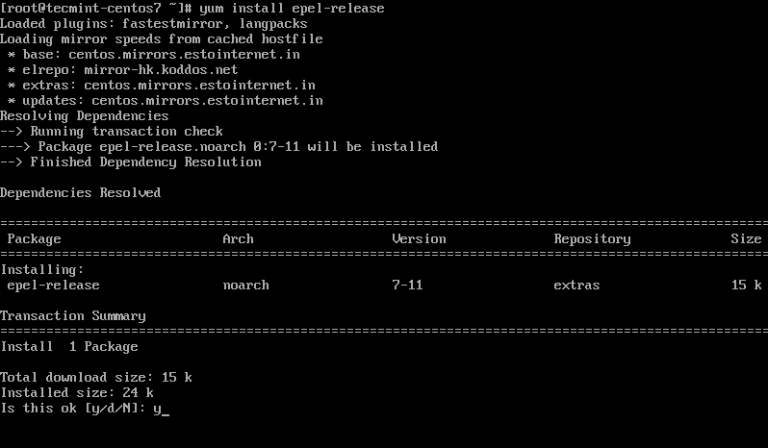
New_certs_dir = $dir/newcerts # default place for new certs.Ĭertificate = $certs/ca.crt # The CA certificate #unique_subject = no # Set to 'no' to allow creation of # This is mostly being used for generation of certificate requests.ĭefault_ca = CA_default # The default ca sectionĭir = /etc/pki/CA # Where everything is keptĬerts = $dir/certs # Where the issued certs are keptĬrl_dir = $dir/crl # Where the issued crl are keptĭatabase = $dir/index.txt # database index file. Then make sure you have the following in your OpenSSL configuration file (/etc/tls/openssl.cnf): # OpenSSL example configuration file. Create these files first: $ touch index.txt
#HOW TO INSTALL LDAPSEARCH CENTOS SERIAL NUMBER#
In addition to that a serial number is needed. The database used by the CA to store information about signed certificates will be stored in the file index.txt directly in the folder /etc/pki/CA. The CA certificate is going to be stored under /etc/pki/CA/certs while the key will reside under /etc/pki/CA/private. The CA will be created under the default path /etc/pki/CA so you should make sure you have this setup correctly under the section in the OpenSSL configuration file. But before we do any changes it is wise to make a copy of the file. Some minor changes are required in order to be usufuil for our purposes. In CentOS you will find the openssl.cnf under /etc/pki/tls/ which we will use.


Let’s begin by creating a Certificate Authority (CA) using OpenSSL. Client and services will have the same CA and will therefor be able to verify each others requests. For this purpose we are going to create a CA that we will further use to sign our used certificates. We will want our directory service to encrypt the communication between our clients in a trusted manner. pfx – PFX, predecessor of PKCS#12 (usually contains data in PKCS#12 format, e.g., with PFX files generated in IIS) p12 – PKCS#12, may contain certificate(s) (public) and private keys (password protected) p7c – PKCS#7 SignedData structure without data, just certificate(s) or CRL(s) der – usually in binary DER form, but Base64-encoded certificates are common too (see. pem – ( Privacy-enhanced Electronic Mail) Base64 encoded DER certificate, enclosed between “-–BEGIN CERTIFICATE-–” and “-–END CERTIFICATE-–“ The components a PKI consist of are ( *):Ĭommon naming convention according to X.509 are ( *): In addition often there is no clear naming convention to the files, and formats involved that it can be quite confusing. A PKI consists of a handful of components that need to be understood well. Creating a CA and Signing the Certificateīefore we begin with the installation of an LDAP directory service we are going to pay attention to the setup of a PKI infrastructure, or at least at some of the core elements of such. In this post CentOS is used as the operation system. The knowledge of this is going to be presumed going forward. As a preliminary step we are going to revisit some basic principals in this post that comprises a secure PKI, and a central OpenLDAP directory service. In up coming posts I am going to highlight some of the necessary steps for a dependable integration of Hadoop in today’s secure enterprise infrastructures including a demonstration of Apache Argus. The integration of a directory service – may it be an OpenLDAP, Apache Directory Server, or Active Directory – is one of the most common cornerstones of a Hadoop installation. This makes it a requirement for services shared by corporate users to seamlessly integrate with the authentication service. Frequently companies organize their complete user management through a directory service, giving them the comfort of SSO.

A central directory service is a common fragment of Enterprise IT infrastructures.


 0 kommentar(er)
0 kommentar(er)
